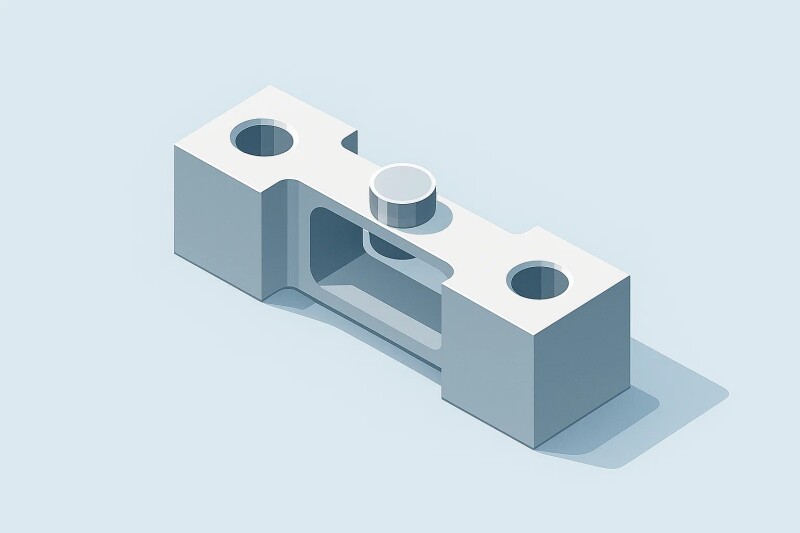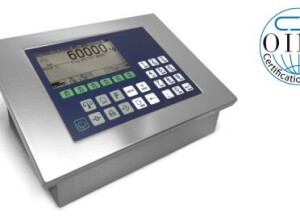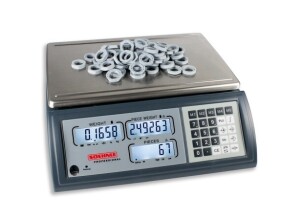[Article]: What Are Load Cells? Types, Applications, and How They Work
Load cells are essential components in weighing systems, converting force or weight into an electrical signal. Found in everything from industrial scales to medical equipment, they provide accurate, reliable measurements of mass or force. This article explains how load cells work, the main types available, and where they are used.
What Is a Load Cell?
A load cell is a transducer that converts a mechanical force into an electrical signal. When a load or force is applied, the cell deforms slightly. This deformation is measured by strain gauges or other sensors, producing a signal that can be read and recorded.
Load cells are critical in ensuring weighing accuracy, safety, and compliance in industrial, commercial, and scientific environments.
How Does a Load Cell Work?
Most load cells operate based on the strain gauge principle. Strain gauges are bonded to a metal element inside the load cell. When force is applied, the element deforms slightly, causing a change in the resistance of the strain gauge. This change is converted into an electrical signal, which is proportional to the applied force or weight.
Main Types of Load Cells
There are several types of load cells, each suited for specific applications and mounting methods:
1. Compression Load Cell
Use: Weighbridges, tank and silo weighing
Features: Designed to measure a force applied in a downward direction
2. Tension Load Cell
Use: Crane scales, suspended weighing systems
Features: Measures force pulled in tension (opposite direction of compression)
3. Shear Beam Load Cell
Use: Floor scales, platform scales, hopper weighing
Features: Compact, resistant to side loads and vibrations
4. Single-Point Load Cell
Use: Retail scales, bench scales, small platforms
Features: Accurate for off-center loads, ideal for small weighing applications
5. S-Type Load Cell
Use: Tension and compression applications
Features: Shaped like an “S”, versatile and easy to mount
6. Pancake Load Cell (Low-profile)
Use: High-precision testing, aerospace, automotive
Features: High accuracy and stability, low height design
7. Load Pins (Load Measuring Pins)
Use: Crane hooks, pulleys, winches
Features: Replaces mechanical pins to measure force directly in lifting applications
8. Canister Load Cell
Use: Heavy-duty truck scales, industrial tanks
Features: High capacity and robust construction
Common Applications of Load Cells
- Industrial weighing: Scales, weighbridges, batching systems
- Logistics: Onboard truck weighing, axle load monitoring
- Agriculture: Silo weighing, feed control
- Healthcare: Hospital beds, patient lifts, infusion monitoring
- Manufacturing: Force testing, robotics, automation
- Aerospace & automotive: Component testing, material fatigue analysis
How to Choose the Right Load Cell
When selecting a load cell, consider the following factors:
- Capacity: Maximum load to be measured
- Mounting configuration: Tension, compression, shear, or combined
- Environment: Exposure to moisture, dust, or chemicals
- Accuracy requirements: Resolution and tolerance for your application
- Legal-for-trade: If used in commercial transactions, must comply with metrology regulations
Conclusion
Load cells are at the heart of every accurate weighing system. Whether you're weighing vehicles, dosing materials, or testing structural components, choosing the right type of load cell ensures performance, safety, and precision. From single-point sensors in shop scales to multi-ton canister load cells in truck weighbridges, there's a solution for every industrial need.
Need help selecting the ideal load cell? Contact our team of weighing specialists for expert guidance and certified solutions tailored to your industry.
Looking for the ideal load cell for your weighing application?
At Weighing Review you will find articles and other contents about all type of scales and other weighing solutions such as technical articles, videos, case studies and guides. You can also search the Suppliers Directory and Marketplace to find the best supplier and product for your weighing needs.



























Interested? Submit your enquiry using the form below:
Only available for registered users. Sign In to your account or register here.